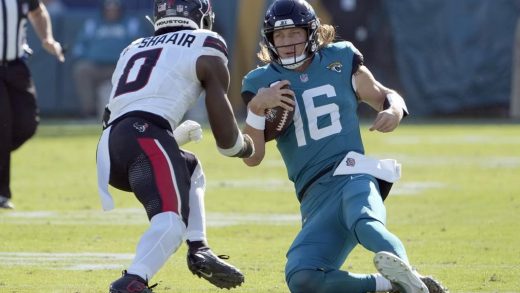:format(webp)/https://www.thestar.com/content/dam/thestar/entertainment/opinion/2022/09/30/hurricane-ian-brings-a-surge-of-storm-porn-to-cable-news/jimcantore_hurricaneian.jpg)
Jim Cantore is lucky to be alive.
At least, he’s lucky he wasn’t rushed to the ER as a team of surgeons and landscapers convened in a surgical theatre: “Male patient, 58 years old. Deciduous branch lodged in right ankle. Team, we need to amputate or prune the living daylights out of this man’s leg, stat!”
The Weather Channel star was in Florida this week, filing live reports as Hurricane Ian wreaked destruction. In one viral clip, Cantore is in Punta Gorda as Mother Nature unleashes her shambolic fury on a street that is evacuated except for one thrill-seeking correspondent.
“You can hardly see anything out here,” shouts Cantore, holding his hat and scanning sideways in the downpour and howling winds.
His legs are in V-formation to bolster his centre of gravity and presumably keep him from turning into a human kite. But a violent gust staggers him forward a few steps. Then he’s KO’d by a flying tree: Ooohh!
“Alright, you know what? Think I’m just gonna come in here for a second.”
Good idea. Maybe find a comfy spot under a sturdy table and have a cup of hot cocoa until the chunks of boat stop whizzing past at terminal velocity?
But Jim, who has earned past nicknames such as “King of The Thundersnow” and “Dr. Doom,” didn’t go inside at once. As another branch just misses him, he grabs a “One Way” traffic sign and bows into the gales, crouching down like a sprinter about to start a race nobody wants to see.
This footage was a One Way to Crazy Town.
Why do TV networks still fly reporters into hurricanes? I get why you need reporters on the ground before and after the hurricane. They relay vital information, survey damage, illuminate search-and-rescue efforts, provide updates on power outages. But during the hurricane?
All reporters are doing then is trying not to get killed.
Defenders of this long-standing TV doom-form will argue it’s crucial for viewers to get an intimate POV. Nonsense. It’s 2022. We all know what a hurricane looks like. Watching reporters wade around like sea turtles in the swelling surge amid downed hydro lines or wrap their arms around a palm tree as their legs flap in the wind is not educational – it’s storm porn.
It’s not like the olden days, when hurricanes or typhoons seemed to magically materialize before sucker-punching coastal cities that had no advance warning. Science now gives us a heads-up well before landfall. Radar, satellite, microwaves, dropsondes, anemometers, drones, reconnaissance aircraft, marine sensors – science knows more about the path and magnitude of a cyclone than TMZ knows about the Kardashians.
There is no good reason for the media to stand outside in a deadly storm.
Now, to be fair, there can be accidental benefits. On Thursday, WESH 2 News reporter Tony Atkins helped carry a nurse to safety in floodwaters. Bravo. But that was not journalism – that was Good Samaritanism.
To the cable execs who claim such real-time disaster coverage is ultimately about public safety and not ratings, there is another question. By flinging a reporter outside during a storm, are you not sending the public a dangerous message? I can imagine many viewers in Florida watching coverage this week and thinking: “That dang fool on CNN is still out there and still alive. Why can’t I body surf down to 7-Eleven and grab a six-pack of Bud Light?”
Have you ever watched a live shot in a hurricane and gleaned any useful info? You have not. That’s because the reporters can barely run their yaps as they are blown around like sandwich bags in a wind tunnel.
Is it crazy out there? Yeah, it’s a hurricane.
It’s supposed to be crazy out there.
One reporter with an NBC affiliate also went viral this week after putting a condom over her microphone to keep it from getting soaked. If you need to protect your equipment with bedroom latex in a visual stunt, maybe just go inside until the worst is over and you have a deeper, harder context.
The forecast did not call for idiocy.
Part of the problem is the accuracy of science in tracking tropical storms. This gives the media plenty of time to fly reporters to danger zones. There’s a reason we have storm chasers, but no earthquake chasers. There is no lava-obsessed equivalent of a Jim Cantore standing in a firefighter suit at the foot of a volcano just before it erupts: “MY FACE IS BURNING!”
An assignment desk can’t plan for a freak mudslide.
But hurricanes are different. We know when and where they are due. And that only amps up the pressure to sensationalize. In 2018, another Weather Channel correspondent was ridiculed after he appeared to be battling Category 5 gusts as two dudes in the background casually sauntered through the shot in no apparent weather distress.
If you can tell me why I need to watch a reporter shriek incoherently as she’s pelted with rain or watch as Dr. Doom nearly gets impaled by a branch, I’ll listen. But for now, I can’t see any real value in this alarmist coverage.
Climate change and extreme weather will require lots of media resources and eyewitness expertise in the years ahead. We need journalism that educates. We need a better understanding of cause-and-effect. We need to know what we can do, if anything, to maintain a habitable planet.
What we don’t need is storm porn.
JOIN THE CONVERSATION



